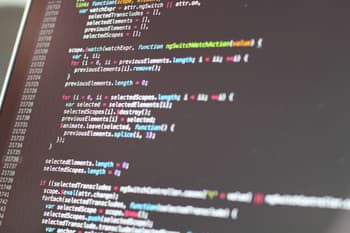As artificial intelligence (AI) continues to revolutionise various sectors, you, as an entrepreneurial student, may be contributing to this field with innovative technologies. However, safeguarding these innovations through appropriate intellectual property (IP) strategies is crucial. In Australia, the Trade Marks Act 1995 and other relevant laws provide a robust framework for protecting AI technologies developed by students. This article will explain IP strategies to protect student-developed AI technologies within the Australian legal context.
The Importance of Intellectual Property
Intellectual property (IP) refers to creations of the mind in industrial, scientific, literary, and artistic fields. As a result, IP protection ensures that the creators can control and benefit from their inventions, preventing unauthorised use by others. Because of the AI industry’s competitive nature, securing IP rights can be the difference between success and failure.
Trade Marks
What is a Trade Mark?
Under the Trade Marks Act 1995 (the ‘Act’), a trade mark is a sign used to distinguish goods or services provided in the course of trade by a person or legal entity, from those provided by any other trader. For AI technologies, trade marks can include:
- brand names;
- logos;
- slogans; and
- other unique identifiers that signify the origin of the technology.
Registering a Trade Mark
To register a trade mark in Australia, you must ensure that your mark is distinctive and not deceptively similar to existing trade marks. The application process involves several steps:
- Existing Trade Mark Search: Conduct a comprehensive search to ensure the proposed trade mark is unique.
- Application: File an application with IP Australia, including details about the mark and the goods/services it will cover.
- Examination: IP Australia will examine the application to ensure compliance with the Act.
- Publication and Opposition: If accepted, the trade mark will be published, allowing third parties to oppose the registration within a specified period.
- Registration: If no opposition is filed or successfully overcome, the trade mark will be registered, granting exclusive rights to its use in Australia.
Importance of Trade Marks for AI Technologies
Trade marks play a crucial role in protecting the branding of AI technologies. They help in building a reputation and customer loyalty, which can be invaluable for student entrepreneurs seeking to commercialise their innovations.
Continue reading this article below the formPatents
What is a Patent?
A patent is a legal right granted for an invention. It provides the patent holder with exclusive rights to exploit the invention for a specified period, typically 20 years. In Australia, patents are governed by the Patents Act 1990.
Patentability of AI Technologies
For your AI technology to be patentable, it must meet certain criteria:
- Novelty: Your invention must be new and not previously disclosed.
- Inventive Step: The technology must involve an inventive step that is not obvious to someone skilled in the field.
- Utility: Your creation must be useful and capable of being applied in a practical context.
Patent Application Process
The process of obtaining a patent involves:
- Preparation: Documenting the invention in detail and conducting a prior art search.
- Filing: Submitting a patent application to IP Australia, including a complete specification of the invention.
- Examination: IP Australia examines the application to ensure it meets all legal requirements.
- Grant: If the application is approved, a patent is granted, giving the holder exclusive rights to the invention.
Benefits of Patents for AI Technologies
Patents provide you a competitive edge by preventing others from copying the patented technology. As a result, they can be particularly important in attracting the investment you need to develop your technology further and seek licensing opportunities.
Copyright
What is Copyright?
Copyright protects original literary, dramatic, musical, and artistic works, as well as other subject matter like software and databases. In Australia, the key law governing copyright is the Copyright Act 1968.
Copyright and AI Software
Copyright can protect the source code and related documentation for student-developed AI technologies. Importantly, you do not need to register for copyright protection–it arises automatically when you create the work.
Benefits of Copyright
Copyright protection ensures that the creator of the software has exclusive rights to reproduce, distribute, and licence the work. This can be crucial for maintaining control over AI software and preventing unauthorised use.

This guide explains the essentials of trade marks and the steps required to register a trade mark.
Trade Secrets
What are Trade Secrets?
Trade secrets encompass confidential business information that provides a competitive edge. This can include algorithms, data sets, and other proprietary information related to AI technologies.
Protecting Trade Secrets
To protect trade secrets, you should implement robust confidentiality agreements and security measures to prevent unauthorised access and disclosure.
Importance of Trade Secrets
Trade secrets can be an effective way to protect aspects of AI technologies that cannot be patented or that are not automatically protected by copyright. They provide indefinite protection as long as the information remains confidential.
Key Takeaways
Protecting student-developed AI technologies through appropriate IP strategies is essential for fostering innovation and ensuring that students can benefit from their creations. By understanding and leveraging the protections available through registering trade marks, patents, copyright, and trade secrets, you can safeguard your AI technologies and pave the way for successful commercialisation. As the AI landscape continues to evolve, staying informed about IP laws and best practices will remain critical for student innovators.
If you need assistance with registering a trade mark for your AI technology, contact our experienced trade mark lawyers as part of our LegalVision membership. For a low monthly fee, you will have unlimited access to lawyers to answer your questions and draft and review your documents. Call us today on 1800 532 904 or visit our membership page.
Frequently Asked Questions
The trade mark registration process in Australia typically takes at least seven months, depending on whether any objections or oppositions are raised during the examination and publication stages.
Using open-source software does not automatically disqualify an AI technology from being patented. However your invention must still be novel, have an inventive step and have utility. Therefore, seek legal advice to ensure that the use of open-source components does not infringe on existing patents and to determine your technology’s patentability.
Copyright automatically protects the expression of ideas, such as your AI software source code. Furthermore, it arises automatically without the need for registration. Trade secrets, on the other hand, protect confidential business information, such as algorithms and data sets, as long as they remain undisclosed. While copyright provides legal protection for the tangible expression of ideas, trade secrets offer protection for proprietary knowledge that gives a competitive advantage.
We appreciate your feedback – your submission has been successfully received.











